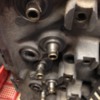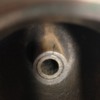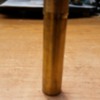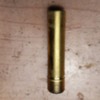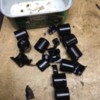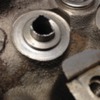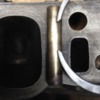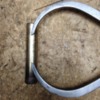Hi every one.
My heads has some very worn valve guides, they have been replaced in the past by an idiot who made cracks on both sides of the heads.
Until now I was thinking about re assembling the engine like that in order to not aggravate anything, but there's too much play so I pulled out one of the bronze guide (0.502 / 11/32 / 2.5 inch long) and I am thinking about machining new ones.
Problem, the cracks are going deep, and of course here welding is not an option, so I read things about porting here : http://www.351c.net/archive/pa...ds/porting-4v-heads/
It's been proposed to remove entirely the guide boss in the head and pressing some tapered new ones.
That could be a good way for me, but, It changes dramatically the port geometry.
I don't want to hurt my port efficiency, can someone explain to me how works this port, what is forbidden to do in it. and if the repair I talked about is an option for me (street car).
Original Post


